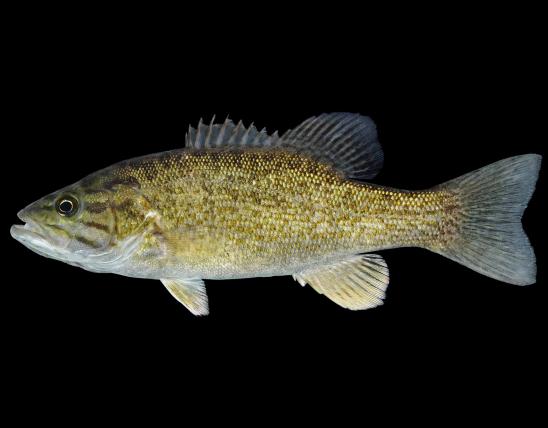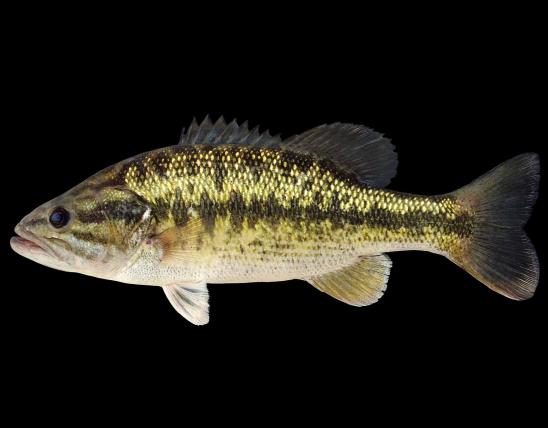Annual Prospects Report
Smallmouth bass fishing in the Smallmouth Bass Special Management Area is expected to be good in 2024. In this stretch, smallmouth bass are the most abundant black bass species present, and anglers can expect to see high numbers of fish in the eight to 12-inch range, and good numbers of fish in the 12 to 15-inch range. Fish greater than 15 inches are also present in good numbers. The area will also provide fair to good opportunities for largemouth bass and goggle-eye. On average, one in three largemouth bass exceed the largemouth length limit of 12 inches, and one in eight goggle-eye exceed the eight-inch length limit. Anglers are reminded the 15-inch minimum length limit on smallmouth bass and daily limit of one begins at Highway 8 bridge near the Phelps/Crawford county line and extends to the railroad bridge crossing at Bird's Nest Access.
On the Meramec in the Crawford and Franklin county portions of the river with an eight-inch minimum length limit, goggle-eye anglers can expect to encounter a fair number of legal fish in 2024. Numbers of sublegal goggle-eye have been on the increase since the minimum length limit regulation was put in place, with the indication that the number of legal eight-inch fish will continue to increase in future years. The low but stable water levels through the fall of 2023 should allow for the young of the year goggle-eye to survive well and will help the population grow in coming years. Goggle-eye fishing around submerged trees in flowing water and along the edges of water willow and submerged vegetation stands in the backwaters can be productive, as well as among boulders on the margins of bluff pools. Preferred artificial baits include crayfish-colored crankbaits and soft plastic jigs and worms.
Meramec black bass anglers can expect to see good sizes and numbers of bass in 2024. Smallmouth bass are generally more common in faster moving waters in riffle margins and runs at the beginning and ends of pools, and spotted/Kentucky bass and largemouth bass are usually more common in the pool and slack-water habitats. During fall sampling, two out of five of smallmouth bass exceeded 12 inches in length and one of eight smallmouth bass were greater than 15 inches in length. Two out of five largemouth bass sampled were over the 12-inch length limit and one in ten were greater than 15 inches in length, although numbers were down from past years. A few largemouth and smallmouth 18 inches or longer can be found throughout the Crawford and Franklin county portions of the river. Artificial lures like plastic worms or grubs, crayfish crankbaits, or buzz baits provide some of the best results for catching smallmouth and largemouth bass.
Spotted bass numbers in Franklin and St. Louis counties are similar to past years. Spotted bass can reach up to 15 inches, but are most common in the 10 to 12-inch range. They are most prevalent in Franklin and St. Louis counties, and several areas provide good access to the Meramec in this area, including Redhorse Access, River Round Conservation Area, Choteau Claim Access, Robertsville State Park, Pacific Palisades, Allenton Access, and Route 66 State Park. There is no length limit on spotted bass and anglers can harvest a daily limit of 12 spotted bass, if no other black bass are taken. Channel catfish and flathead catfish can be found in this section as well in pools and runs with boulders, rootwads and submerged trees. Catfish longer than 20 inches are present, and can be caught using limb lines, set lines, and trotlines.
Redhorse sucker species and freshwater drum are also common in the Meramec in Crawford, Franklin, and St. Louis counties. Anglers can expect to see good numbers and sizes of these species in 2024. Sucker species and other nongame fish can be harvested by gigging, but they can also be taken by hook and line all year long. Gigging season starts September 15 and runs to February 15. Giggers are reminded to positively identify their target first to avoid unintentional harm to game fish and their populations.
Longear sunfish are abundant in most sections of the Meramec, and although most are within the 3-5 inch range, they can provide good fishing entertainment for anglers of all ages.




























